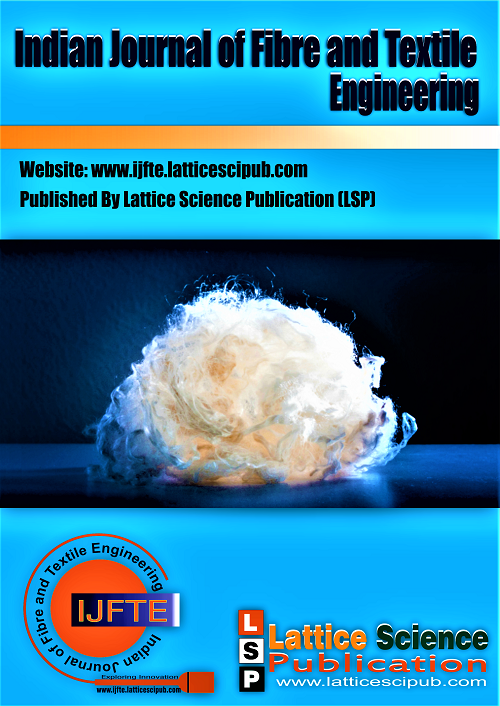A Farm Typology Based on a Modelling of Their Size on a Global Level
Main Article Content
Abstract
To this day, cotton is one of the main cash crops in Benin, despite the emergence of certain crops that are considered less constraining. In sub-Saharan African countries, agriculture is essential for economic growth, which is necessary to reduce poverty and food insecurity. In the cotton-growing areas, the support given to farms in the framework of national actions or bilateral/multilateral cooperation is not based on a typology of farms to help identify what to do and measure what has been achieved. Differences in land area per capita and land productivity largely explained the variation in food security across sites. In agriculture, such grouping of farms might help for a better knowing and understanding of the structure and functioning of each farm group as well as the problems, opportunities, and needs in terms of policy intervention and support. This study aims to draw up a typology of cotton production based on area size. The present work aimed at establishing a typology of the cotton farms used as a first discriminatory factor, which was the farm size, measured by the size of land under cotton cultivation. This size may also reflect the crop’s importance for farmers. Based on this factor or criterion, a first discrimination of cotton farms has been set, giving different groups of cotton farms. To this end, data were collected from 140 cotton growers in Benin. Using discriminant factors, a typology analysis based on farm size was carried out. The results showed that farm size is determined by socio-economic and demographic characteristics, as well as by access to production factors. Agricultural policies aimed at increasing cotton production can influence factors such as access to production inputs.
Downloads
Article Details

This work is licensed under a Creative Commons Attribution-NonCommercial-NoDerivatives 4.0 International License.
How to Cite
References
Jayne, T. S., & Sanchez, P. A. (2021). Agricultural productivity must improve in sub-Saharan Africa. Science, 372(6546), 1045‑1047. DOI: https://doi.org/10.1126/science.abf5413
Diao, X., Hazell, P., & Thurlow, J. (2010). The Role of Agriculture in African Development. World Development, 38(10), 1375‑1383. DOI: https://doi.org/10.1016/j.worlddev.2009.06.011
Chabi Simin Najib, D., Fei, C., Dilanchiev, A., & Romaric, S. (2022). Modeling the impact of cotton production on economic development in Benin : A technological innovation perspective. Frontiers in Environmental Science, DOI: http://dx.doi.org/10.3389/fenvs.2022.926350
Douxchamps, S., Van Wijk, M. T., Silvestri, S., Moussa, A. S., Quiros, C., Ndour, N. Y. B., Buah, S., Somé, L., Herrero, M., Kristjanson, P., Ouedraogo, M., Thornton, P. K., Van Asten, P., Zougmoré, R., & Rufino, M. C. (2016). Linking agricultural adaptation strategies, food security and vulnerability : Evidence from West Africa. Regional Environmental Change, 16(5), 1305‑1317. DOI: https://doi.org/10.1007/s10113-015-0838-6
Fok, M. (2004). Progress and challenges in making productivity gains in cotton production by smallholders in Sub-Saharan Africa (SSA). https://agritrop.cirad.fr/520556/1/ID520556.pdf
Jacquet, I., Wang, J., Zhang, J., Wang, K., & Liang, S. (2022). An Understanding of Education in Supporting Cotton Production : An Empirical Study in Benin, West Africa. Agriculture, 12(6), Article 6. DOI: https://doi.org/10.3390/agriculture12060836
Maboudou Alidou, G., & Niehof, A. (2020). Responses of Rural Households to the Cotton Crisis in Benin. Sustainability, 12(10), Article 10. DOI: https://doi.org/10.3390/su12104207
Koné, S., & Fok, M. (2021). Typology for action of the cotton farms in Cote d’Ivoire. https://www.cabidigitallibrary.org/doi/full/10.5555/20220048795
Ollabodé, N., Obe, M. M., Kpadé, C. P., & Sekloka, E. (2024). Typologie et performances économiques des exploitations cotonnières au Bénin. Économie rurale, 387(1), 49‑67. DOI: https://doi.org/10.3917/ecru.387.0049
Capillon, A., & Manichon, H. (1979). Une typologie des trajectoires d’evolution des exploitations agricoles (principes, application au developpement agricole regional) [France]. Comptes Rendus des Seances de l’Academie d’Agriculture de France, 65. https://agris.fao.org/search/en/providers/123819/records/647357f953aa8c8963072d6b
Cristofini, B. (1985). La petite région vue à travers le tissu de ses exploitations. https://agris.fao.org/search/en/providers/122439/records/647472702d3f560f80aaf6cc
Zellner, A. (1962). An Efficient Method of Estimating Seemingly Unrelated Regressions and Tests for Aggregation Bias. Journal of the American Statistical Association, 57(298), 348‑368. DOI: https://doi.org/10.1080/01621459.1962.10480664
Soun, B., Saini, Dr. H. K., & Brar, Dr. K. K. (2023). Study on Properties of Sisal-Cotton Union Fabrics Developed in Handloom and Power-Loom for Textile Application. In Indian Journal of Fibre and Textile Engineering (Vol. 3, Issue 1, pp. 1–4). DOI: https://doi.org/10.54105/ijfte.a2405.053123
P.Ramakrishnan, An Examination on Production and Marketing of Cotton in Srivilliputtur Taluk. (2019). In International Journal of Innovative Technology and Exploring Engineering (Vol. 9, Issue 2S2, pp. 468–472). DOI: https://doi.org/10.35940/ijitee.b1218.1292s219
Chilukoti., G. R., Venkatesh, B., Chavhan, Md. V., & Kumar, M. S. J. (2020). Colour Strength and Washing Fastness Properties of Cotton Fabric Dyed With Kasunda Flower Extract. In International Journal of Recent Technology and Engineering (IJRTE) (Vol. 8, Issue 5, pp. 2019–2022). DOI: https://doi.org/10.35940/ijrte.e5038.018520
R.I., R., I.D., M., M.A., G., & T.O, T. (2020). Changing the Cotton Fiber Temperature. In International Journal of Engineering and Advanced Technology (Vol. 9, Issue 3, pp. 974–977). DOI: https://doi.org/10.35940/ijeat.b3992.029320





